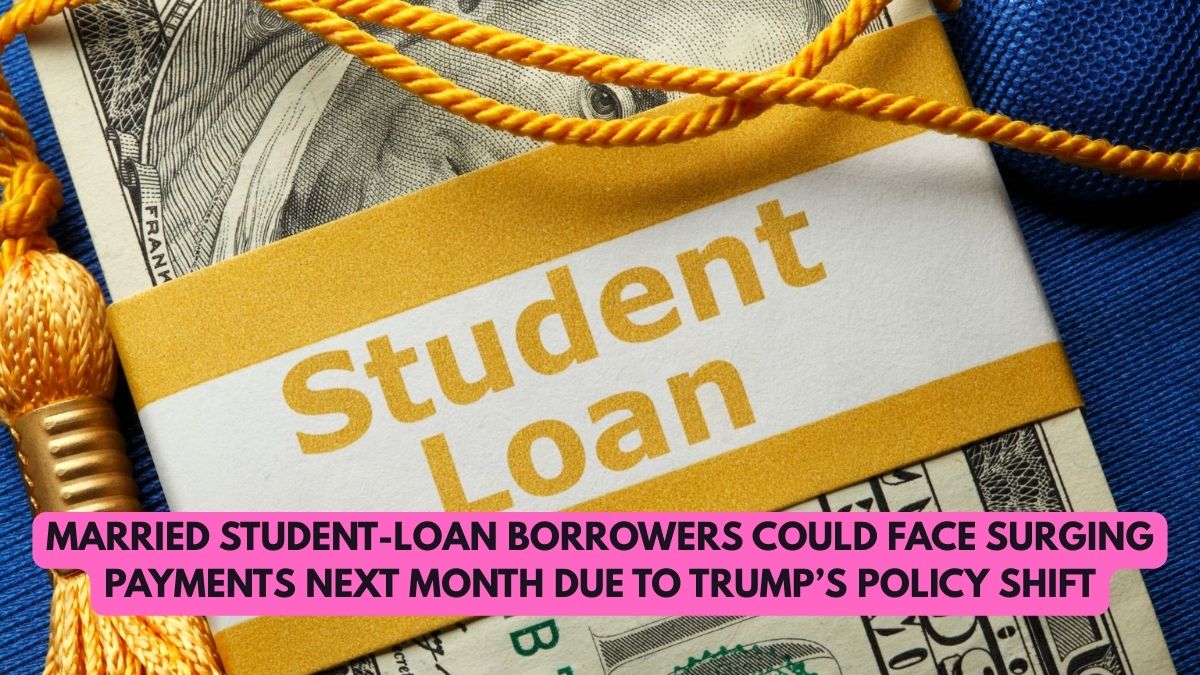Married student-loan borrowers across the United States briefly faced the threat of significantly increased monthly payments this May following a policy change under the Trump administration. But the U.S. Department of Education has since clarified the situation—revealing the spike was based on a misunderstanding.
What Sparked the Confusion?
Earlier this month, the Department of Education suggested that, due to a recent court ruling blocking President Biden’s SAVE Plan, married borrowers filing taxes separately would now have their spouse’s income counted when calculating monthly payments under Income-Driven Repayment (IDR) plans. This approach could have pushed many borrowers into higher payment brackets.
The policy update came in the wake of a federal court order halting the SAVE plan, which was designed to reduce monthly payments and provide faster paths to forgiveness. The ruling forced the Education Department to review and adjust related loan repayment frameworks.

However, on April 19, the Department clarified that their earlier statement was a miscommunication. According to their updated position, existing IDR rules—including Income-Based Repayment (IBR) and Pay As You Earn (PAYE)—still apply. This means that borrowers who file separately from their spouse will not have their spouse’s income factored into payment calculations.
“This clarification is vital for married borrowers trying to stay on top of their financial obligations,” said a Department of Education official. “We are committed to transparency during this transitional period.”
What Borrowers Should Know
While the misstatement was walked back, the SAVE plan itself remains in limbo due to legal challenges. As a result, borrowers previously enrolled in the SAVE plan are now in administrative forbearance and must either wait for further guidance or switch to an alternative IDR plan to maintain their eligibility for programs like Public Service Loan Forgiveness (PSLF).
Borrowers who stay in forbearance risk interest accrual or losing time counted toward loan forgiveness. Switching plans early may be a smart move, especially for those in public service jobs.
Key Points for Married Borrowers:
- Filing Separately? Your spouse’s income is still excluded in most IDR plans.
- Filing Jointly? Your spouse’s income is included, as before.
- Family size is still counted in both cases to determine poverty guidelines.
- No changes are being implemented for May 2025 regarding spousal income inclusion.
Upcoming Policy Shift: Defaulted Loans Face Renewed Collection
While the repayment calculation scare has been resolved, another Trump-era policy is about to take effect. Starting May 5, 2025, the Education Department will resume collection efforts on defaulted federal student loans, ending a long-standing COVID-era pause that began in March 2020.
Borrowers who defaulted will now be subject to:
- Garnishment of federal tax refunds
- Withholding of up to 15% of Social Security benefits
- Deductions from federal salaries, per the Treasury Offset Program
This move is expected to impact millions who are still struggling to recover financially from the pandemic. Critics argue it could disproportionately hurt low-income families and the elderly.
“Reinstating these penalties in the current economic climate is harsh,” said Persis Yu, managing counsel at the Student Borrower Protection Center. “Borrowers deserve a fair chance to rebuild.”
How to Prepare
With the policy environment rapidly shifting, experts urge borrowers to:
- Review your loan status on StudentAid.gov
- Consult a student loan advisor or your loan servicer before making plan changes
- Enroll in a current IDR plan to maintain forgiveness eligibility
- Check eligibility for loan rehabilitation if in default

Organizations like the National Consumer Law Center and Student Loan Borrower Assistance offer free resources to help borrowers navigate repayment.Final Takeaway
Though the initial announcement created panic among married borrowers, the Department of Education has confirmed that there is no immediate rule change affecting how spousal income is calculated under IDR plans—at least for those filing separately.
However, with default penalties resuming in May and ongoing legal battles surrounding SAVE, it’s more important than ever to stay informed and proactive in managing student debt.
This article has been carefully fact-checked by our editorial team to ensure accuracy and eliminate any misleading information. We are committed to maintaining the highest standards of integrity in our content.

Deepak Grover is a dedicated content writer at OTE News, specializing in government affairs, public policy, and current events. With a keen eye for detail and a passion for factual reporting, he ensures readers receive accurate and insightful news. Deepak holds a degree in Political Science and has experience in research-driven journalism.
When not writing, he enjoys reading historical books, exploring hiking trails, and staying updated with global political trends. His commitment to ethical journalism makes him a trusted voice at OTE News.




